ADDRESS AT THE LAUNCHING OF THE 'CDFD-SUN-COE IN MEDICAL BIO-INFORMATICS' AT CENTRE FOR DNA FINGERPRINTING AND DIAGNOSTICS, HYDERABAD
05-08-2005 : Hyderabad
Convergence of Technologies
I am delighted to participate in the launch of ?CDFD SUN-COE in Medical Bio-informatics?, a collaborative venture between the Andhra Pradesh Government, Sun Microsystems and the Centre for DNA Fingerprinting and Diagnostics (CDFD). The centre of excellence should also function as a national node of the Asia Pacific Bio-informatics Network (APBioNet) of Department of Bio-technology to promote bioinformatics education in the country. I greet the Director (CDFD), scientists, technologists, software engineers, partners ? Sun Microsystems, TCS, L.V. Prasad Eye Institute, Mediciti Hospitals and distinguished guests on this occasion.
The science of proteomics and gene chip
India missed the great opportunity in partnering the human genome project and thereby lost the utility of right type of data. I suggest the Indian biomedical community to take the initiative to become a working partner in the proteomics project of gene characterization. Proteomics is the study of all the proteins expressed by the genome of a cell. It is the logical extension of genomics. Proteomics helps to understand the basic biological processes critical to normal cellular functions as well as the development of diseases. It identifies the essential components of these processes and exploits these components as targets in the development of new methods to prevent or treat diseases. The national programme on proteomics has to be accelerated with partnership from industries and R & D laboratories. I would suggest that this should be pursued as a mission mode project. The proteomics resulting into a gene chip can become the future diagnosis and treatment regime for many diseases. The Centre of excellence must be aware of the progress made in the proteomics programme and understand the processes at the molecular level so that the genetic characterization leading to forecasting and diagnosis of the disease for adopting suitable preventive and curative measures.
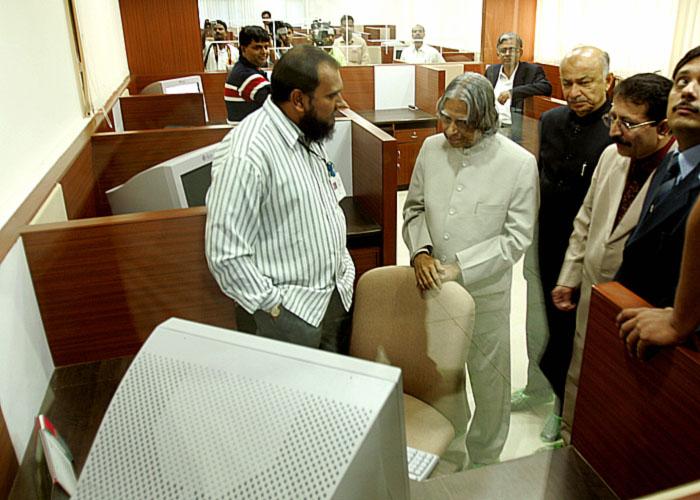

Bioinformatics
The convergence of bioscience and IT into Bioinformatics has given the thrust to researchers for genomics-based drug discovery and development. Pressure is mounting over the pharmaceutical companies to reduce or at least control costs, and have a growing need for new informatics tools to help manage the influx of data from genomics, and turn that data into tomorrow's drugs.
Bioinformatics data play a vital role and emerging as a business model for the medical and pharmaceutical sector. Key areas such as gene prediction, data mining, protein structure modelling and prediction, protein folding and stability, macromolecular assembly and modelling of complex biological systems are thriving and IT has major role to play in these areas in bringing the tools to manage the high throughput experiments and the data they generate, and sharing and integrating all the data in a meaningful way resulting into the detailed models of complex systems, particularly biological pathways.

Computational biology and drug design
When I am in the CDFD campus for launching of "CDFD-SUN-COE in Medical Bioinformatics" which has potential of forecasting and diagnosing diseases in the healthcare area, I realize this Centre Of Excellence (COE) is based on the convergence of multi science and technologies: Medical Science, Biology and Informatics, called Medical Bioinformatics. Let me share with you one experience. Last year when I visited Hyderabad on 14th July 2004, I launched the Bio-Suite which is an important software package that caters to all aspects of computational biology from genomics to structure-based drug design. It incorporates the latest publicly known algorithms, as chosen by a panel of academic partners, and has been coded entirely by the TCS team, using the software engineering practices. It can be used by academic and R&D institutions, small/medium and large biotechnology companies. I am happy to note that the researchers of CDFD will be making full use of this bio-suite developed by TCS in collaboration with CSIR and academic institutions, for cost effective drug development.
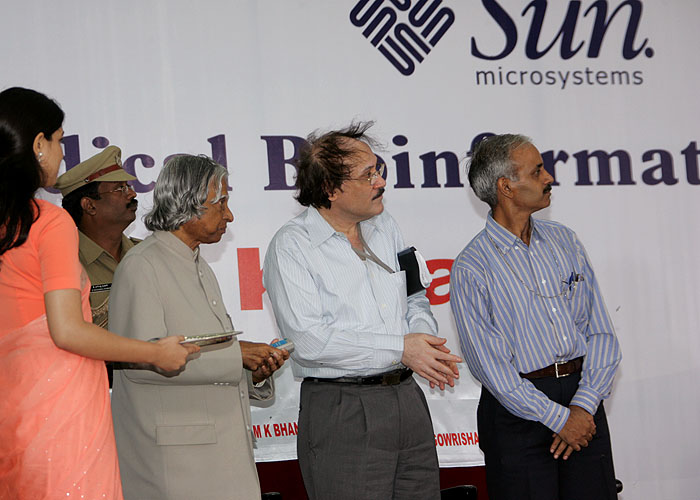

Gene Chip
Last year I visited Dr. Cherian?s Medical Centre at Chennai. It is known as, International Centre for Biomedical Sciences and Technology (Research & Applications). There I interacted with Dr. Emmanuel, who is working in the area of Gene Chip. He says the Gene Chip can be used for finding the existence of genetic diseases including coronary artery diseases or neuro defect in the baby during a certain stage of pregnancy itself. The chip could also be modified to suggest to the patient?s system to develop those chemicals which in turn will help the patient recover from the present situation. The specialists assembled here must debate whether gene chip can be used for identifying the susceptibility of the baby to the allergic diseases in the advanced stage of pregnancy. Can medical bio-informatics help in finding a treatment regime for the mother which may give immunity to the child from the allergic disease. The Centre of excellence should work with research centres for maximizing the application of medical bio-informatics for diagnostics and determination of treatment regime.
In the "New Scientist" dated 6th November 2004, it is reported that the developing human embryos have a gap in the same place in the upper jaw which later fuses. If it fails to fuse, the result is a cleft palate or cleft lip. Most likely, then these birth defects would arise from the same development process that gave us the ability to breath through our noses. It is reported with proof in animal test lifetime exposure to certain toxins (Rotenone) will lead to Parkinson?s Disease. I suggest, both these findings can be studied by the scientists working in the area of Medical Bioinformatics for possible regimes of remedy.
It is reported that gene differences between humans and most animals are very nominal. More than 90% of our DNA is similar. This property is a boon to researchers since animal models can be subsequently used for curing human diseases based on trial data. I would recommend the medical researchers to progress further in this area for finding the application of Gene Chip as a diagnostic tool and as a treatment regime for allergic diseases and asthma.

Sickle Cell disease
When I visited Chattisgarh during 2004, I was informed by various authorities that sickle cell anemia disease is widely prevalent in tribal areas and even in the adjoining States. I understand over 25 lakh population suffers from this disease. Life expectancy of this population is quite low and it is reported that this disease is a silent killer. The Medical Researchers of India have to take up this task in all earnestness.
Dr. Kmiec had shown that the new gene repair technology may hold promise as a treatment for sickle cell anemia and other diseases by correcting the DNA mutation from which they arise.
Sickle cell disease is an inherited condition. Two genes for the sickle hemoglobin must be inherited from one's parents in order to have the disease. A person who receives a gene for sickle cell disease from one parent and a normal gene from the other has a condition called sickle cell trait. Sickle cell trait produces no symptoms or problems for most people. Sickle cell disease can neither be contracted nor passed on to another person. The severity of sickle cell disease varies tremendously. Some people with sickle cell disease lead lives that are nearly normal. Others are less fortunate, and can suffer from a variety of complications. Some of the common symptoms seen in the patients suffering from sickle cell anemia include i) anemia ii) intermittent jaundice iii) severe joint pains iv) recurrent infections. These symptoms appear between the ages of four and five and severity increases with advancement of age. The available treatment strategies can be divided into anti-sickling agents, vasoactive drugs bone marrow transplantation and gene therapy. CDFD?s SUN-COE can take up a time bound mission for finding a possible curative and preventive measure for Sickle cell disease.
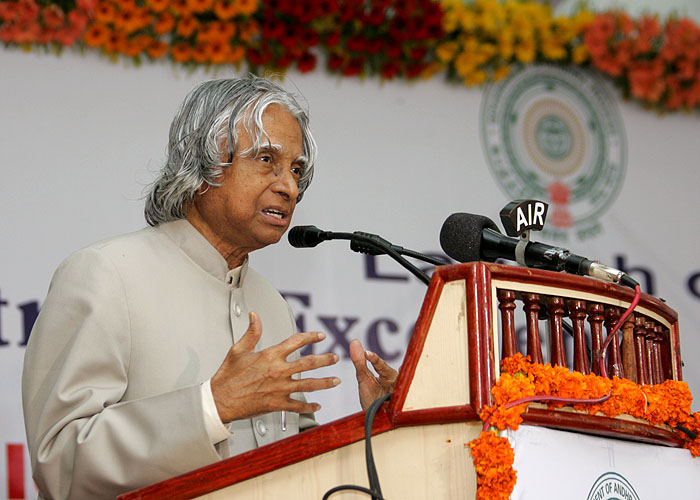

Primary Congenital Glaucoma
I am very happy to know the collaboration of CDFD and LV Prasad Eye institute resulted in research results on Primary Congenital Glaucoma (PCG) which is a severe form of childhood blindness caused by developmental defect(s) in the trabecular meshwork and anterior chamber angle of the eye.
I am happy to note that the clinicians and scientists of the L V Prasad Eye Institute in collaboration with CDFD have found out the molecular basis of primary congenital glaucoma in India. This study led to the identification of 10 Novel mutations. This team has also identified MYOC gene as the other defective gene in these patients. The clinicians in the L V Prasad Eye Institute are trying to combat this blinding disorder through an integrated management of medical, surgical, rehabilitation care and genetic profiling. This integrated management is a noteworthy approach and is likely to yield good results. The results of this study paves the way for the identification of carriers who are at-risk in transmitting the disorder to the next generation. Hence through genetic counseling the disorder in subsequent generations can be prevented and thereby lessening the burden of these afflicted families.
I would suggest CDFD and L V Prasad Eye Institute to continuously share the research results with the ophthalmologists spread in the country through the APBioNet. With the core competence in the CDFD of characterization of two pathogens of TB and HIV, for proper drug management. CDFD has to network with the centres working with TB ? HIV research and hospitals who are treating the diseases.
Particularly for this kind of networking with the partnering institutions it is essential for the CDFD to have a tele-education and tele-medicine network for the medical education and training. Such a tele-education delivery system is functional at Rashtrapati Bhavan for connecting various institutions and rural areas. You may like to study the system at RB for implementation in CDFD. ISRO's EDUSAT can provide the tele-education network connectivity.
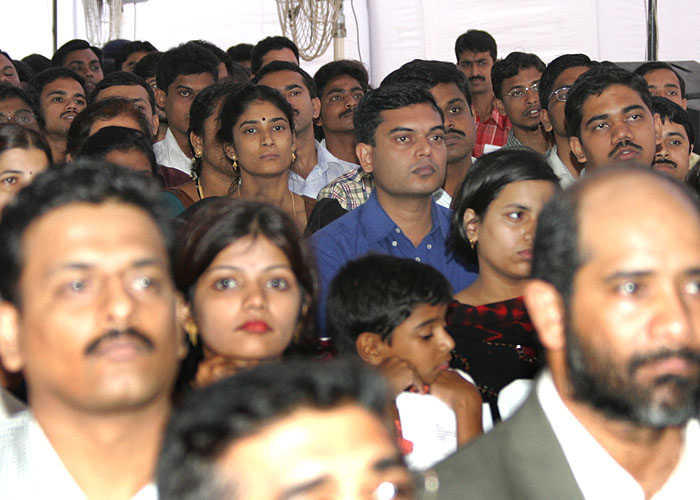

Bioinformatics traditional medicines
The nation?s strengths predominantly reside in its natural and human resources. India ranks among the top few nations having a rich bio- diversity. Particularly, in the herbal area there
are potential applications for developing multiple products for nutrition, prevention and cure of diseases. Of the global herbal product market of US$ 61 billion, China has a share of around US $ 6 billion, whereas India?s share is not even US $ One billion. There are opportunities for growth in this area. India has similar potential for promoting floriculture and aquaculture in a big way. Knowledge-based value addition for these natural resources would mean exporting value-added products rather than merely the raw materials. Use of medical bioinformatics for leading the herbal products into drug design and development and commercialization should be explored. It is essential to leverage this wealth for national well being as well as to seek global presence for the nation. I would recommend scientists of CDFD to study and suggest how medial bioinformatics can help the traditional medicine manufacturers to systematically prove and get the necessary approvals for use of the medicines in different parts of the world.
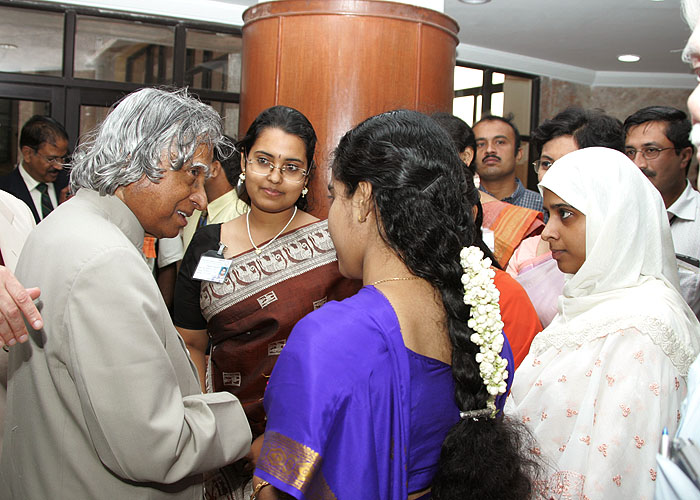

Conclusion
I am very happy to launch CDFD-SUN-COE in Medical Bioinformatics. CDFD can take up the following time bound missions for the next 5 years:
1. Characterization of TB ? HIV pathogens.
2. Finding the genetic reason for the higher incidence of cardiac diseases among Indian population.
3. Creation of data base on stem cell research, progressing in various parts of the world particularly relating to India with reference to the routes followed in generation of stem cell and application results.
4. Curative and preventive measures for Sickle Cell disease through genomic study.
5. Evolution of Tele-Medical Bioinformatics network for education, training and collaborative research.
I am sure that CDFD in partnership with research, academic institutions and Sun Microsystems will make a breakthrough in medical bioinformatics which will be useful to the nation. I wish you all success in your missions.
May God bless you.
<<Back
|